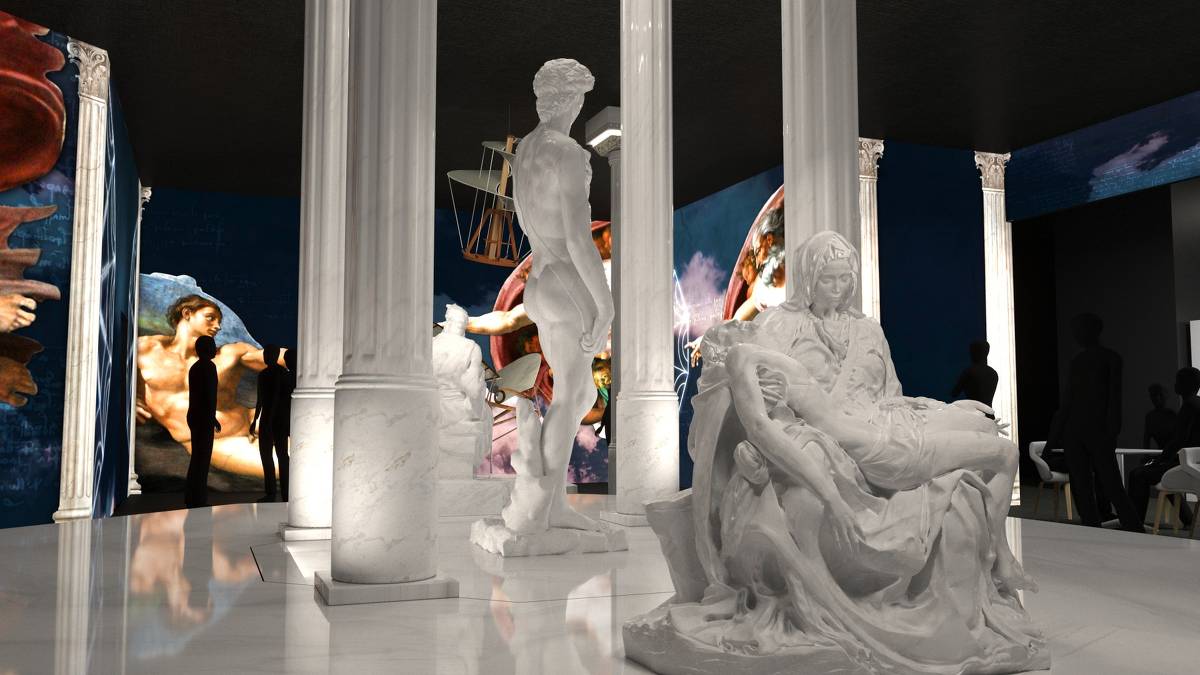The convergence of light and perspective technologies is revolutionizing how we interact with digital and physical environments, creating unprecedented opportunities across industries.
💡 The Evolution of Light Technology: From Edison to Quantum Illumination
Light technology has undergone a remarkable transformation since Thomas Edison’s incandescent bulb illuminated the world over a century ago. Today’s innovations extend far beyond simple illumination, incorporating smart systems, quantum mechanics, and adaptive technologies that respond to human needs in real-time.
Modern light-emitting diodes (LEDs) represent just the tip of the iceberg. The latest developments in photonics, laser technology, and optical computing are reshaping entire industries. From healthcare diagnostics to autonomous vehicle navigation, light-based technologies are becoming the backbone of our increasingly connected world.
The integration of artificial intelligence with lighting systems has created environments that learn user preferences, adjust automatically to circadian rhythms, and optimize energy consumption. These smart lighting solutions are not merely reactive but predictive, anticipating needs before users even recognize them.
🔬 Breakthrough Innovations in Perspective Technology
Perspective technology encompasses the methods and systems that allow us to capture, manipulate, and display three-dimensional information. Recent breakthroughs have moved this field from theoretical concepts to practical applications that are transforming entertainment, education, and professional workflows.
Volumetric Display Systems: Bringing Holograms to Reality
The science fiction dream of holographic displays is rapidly becoming reality. Volumetric display systems now create three-dimensional images that can be viewed from any angle without special glasses or headsets. These systems use various approaches including rotating LED arrays, laser plasma generation, and trapped particle illumination.
Companies and research institutions worldwide are developing volumetric displays for medical imaging, allowing surgeons to examine complex anatomical structures in true 3D before operations. Architecture firms use these systems to present building designs with unprecedented clarity, enabling clients to virtually walk through spaces before construction begins.
Light Field Technology: Capturing Reality in Full Dimension
Traditional cameras capture light intensity at a single plane, but light field cameras record both the intensity and direction of light rays. This revolutionary approach enables photographers to refocus images after capture, change perspective angles, and create accurate depth maps automatically.
The implications for computational photography are enormous. Light field technology is enabling new forms of content creation for virtual reality, improving facial recognition systems, and enhancing autonomous vehicle perception. The technology captures approximately 100 times more information than conventional cameras, providing unprecedented detail for post-processing applications.
🌟 Smart Lighting Systems: Intelligence Meets Illumination
The integration of Internet of Things (IoT) connectivity with lighting infrastructure has created ecosystems where every light source becomes a data node. These networks extend far beyond simple on-off controls, incorporating sensors, processors, and communication modules that transform passive lighting into active infrastructure.
Modern smart lighting systems monitor occupancy, adjust color temperature throughout the day, and communicate with other building systems to optimize overall energy performance. In retail environments, these systems track customer movement patterns, adjust displays to enhance product appeal, and even transmit location-based information to shoppers’ smartphones.
Human-Centric Lighting: Aligning Technology with Biology
Perhaps the most significant advancement in lighting technology is the recognition that illumination profoundly affects human health and performance. Human-centric lighting systems dynamically adjust color temperature and intensity to support natural circadian rhythms, improving sleep quality, mood, and cognitive function.
Research has demonstrated that exposure to blue-rich light in morning hours increases alertness and productivity, while warmer tones in evening promote relaxation and melatonin production. Advanced systems now incorporate this biological understanding, automatically adjusting throughout the day to support optimal human functioning.
🎥 Augmented and Mixed Reality: Where Light Creates New Worlds
The boundary between physical and digital reality continues to blur thanks to sophisticated light manipulation technologies. Augmented reality (AR) and mixed reality (MR) devices overlay digital information onto the physical world by precisely controlling how light reaches our eyes.
Recent developments in waveguide technology have enabled slimmer, more comfortable AR glasses that project high-resolution images directly onto transparent lenses. These devices are revolutionizing fields from surgical navigation to industrial maintenance, providing hands-free access to critical information exactly when and where it’s needed.
LiDAR Technology: Painting the World with Light
Light Detection and Ranging (LiDAR) systems use laser pulses to measure distances with extraordinary precision, creating detailed three-dimensional maps of environments. Once confined to specialized applications like geological surveying, LiDAR has become mainstream technology appearing in smartphones, autonomous vehicles, and robotics.
The latest LiDAR sensors operate at multiple wavelengths simultaneously, penetrating various materials and weather conditions. This multi-spectral approach enables applications from archaeological discovery beneath forest canopies to quality control in manufacturing where subsurface defects must be detected without destructive testing.
🏭 Industrial Applications: Transforming Manufacturing and Design
Industrial sectors are experiencing profound transformations through advanced light and perspective technologies. Laser-based additive manufacturing (3D printing) now produces everything from aerospace components to customized medical implants with precision measured in microns.
Structured light scanning systems capture product dimensions and surface characteristics faster and more accurately than traditional measurement tools. These systems project known patterns onto objects and analyze distortions to reconstruct perfect digital models, enabling rapid quality control and reverse engineering.
Photonic Computing: Processing Information at Light Speed
Perhaps the most revolutionary development lies in photonic computing, where light replaces electrons as the information carrier. Photonic processors promise dramatically faster computation with significantly lower energy consumption than electronic counterparts.
While fully operational photonic computers remain developmental, hybrid systems incorporating optical components alongside traditional electronics are already accelerating artificial intelligence training, cryptography, and scientific simulation. The potential for processing information at literal light speed could redefine computing capabilities within the next decade.
🎨 Creative Industries: New Tools for Artists and Designers
Artists and designers now wield light manipulation technologies that would have seemed magical just years ago. Projection mapping transforms buildings into dynamic canvases, with precisely calibrated projectors creating illusions of movement, transformation, and impossible physics.
Digital light processing has revolutionized cinema production, with virtual sets rendered in real-time on massive LED walls. Actors now perform within realistic environments visible to both cameras and human eyes, eliminating the need for green screens and enabling more authentic performances.
Bioluminescent Technology: Nature-Inspired Innovation
One of the most fascinating frontiers involves harnessing biological light production. Researchers are engineering organisms and synthetic systems that generate light through chemical reactions rather than electricity. Bioluminescent trees could one day illuminate streets without power infrastructure, while glowing building materials might provide emergency lighting during power failures.
These bio-integrated approaches represent a fundamental shift toward sustainable technologies that work with natural processes rather than against them. While commercial applications remain limited, the potential environmental benefits drive continued research investment.
🏥 Healthcare Revolution: Diagnostic and Therapeutic Innovations
Medical applications of advanced light technology are saving lives and improving treatment outcomes across specialties. Optical coherence tomography uses light waves to capture micrometer-resolution images of biological tissues, enabling early detection of conditions from macular degeneration to cancer.
Photodynamic therapy combines light-sensitive drugs with specific wavelengths of light to destroy cancer cells and treat certain skin conditions with minimal damage to surrounding healthy tissue. This targeted approach offers alternatives to more invasive procedures with faster recovery times.
Surgical Precision Through Advanced Imaging
Surgeons now operate with augmented vision systems that overlay critical information directly onto their field of view. These systems combine multiple imaging modalities—including infrared, fluorescent markers, and ultrasound—into composite displays that reveal what’s invisible to the naked eye.
Fluorescence-guided surgery uses special dyes and filtered light to highlight tumor boundaries, blood vessels, and nerve structures in real-time. This enhanced visualization dramatically improves surgical precision, reducing complications and improving patient outcomes across procedures from brain surgery to cancer removal.
🌍 Environmental Monitoring and Conservation
Advanced perspective and light technologies are providing unprecedented insights into environmental changes. Multispectral and hyperspectral imaging from satellites and drones monitors forest health, tracks illegal deforestation, and measures ocean temperature patterns with remarkable detail.
Light-based sensors deployed across ecosystems continuously monitor air quality, water chemistry, and biodiversity indicators. This real-time data enables rapid response to environmental threats and provides researchers with comprehensive datasets for understanding complex ecological relationships.
Agricultural Optimization Through Precision Photonics
Farmers are leveraging light technology to optimize crop yields while minimizing resource use. Spectral analysis reveals plant health status days or weeks before problems become visible to human observers, enabling targeted interventions that prevent crop losses.
Controlled environment agriculture uses precisely tuned LED arrays to provide optimal light spectra for different growth stages, dramatically increasing productivity while reducing energy consumption. These systems are enabling year-round production of fresh produce in locations previously unsuitable for farming.
🚗 Transportation and Navigation: Seeing the Path Forward
Autonomous vehicles rely heavily on light-based perception systems to navigate safely. The combination of cameras, LiDAR, and radar creates redundant sensing capabilities that function reliably across various weather and lighting conditions.
Advanced driver assistance systems use time-of-flight cameras that measure distance by calculating how long light takes to bounce back from objects. These systems enable features like automatic emergency braking, adaptive cruise control, and parking assistance that make driving safer for everyone.
🔮 The Future Illuminated: What’s Coming Next
The trajectory of light and perspective technology points toward even more transformative developments. Quantum illumination could enable detection of objects in extremely noisy environments, with applications from medical diagnostics to defense systems.
Metamaterials engineered at the nanoscale are creating “impossible” optical properties like perfect lenses, invisibility cloaks, and ultra-efficient solar cells. While many remain experimental, the underlying principles are sound and commercialization appears inevitable.
Brain-computer interfaces incorporating retinal projection could eventually deliver visual information directly to our nervous systems, bypassing damaged eyes or creating entirely synthetic visual experiences indistinguishable from natural sight.
🌈 Illuminating Tomorrow: Integration and Convergence
The true power of these technologies emerges not from individual breakthroughs but from their integration. Smart cities will combine intelligent lighting networks with perspective-aware systems that optimize traffic flow, enhance public safety, and create more livable urban environments.
As artificial intelligence becomes more sophisticated, light-based systems will gain unprecedented capabilities to interpret complex scenes, predict behavior, and respond adaptively to changing conditions. The fusion of photonics, computing, and artificial intelligence represents one of the most promising technological frontiers.
Educational institutions are already preparing the next generation of scientists and engineers who will further advance these fields. Interdisciplinary programs combining physics, engineering, computer science, and design are producing graduates equipped to tackle challenges we haven’t yet imagined.
The innovations in perspective and light technology are not merely technical achievements but tools for addressing humanity’s most pressing challenges. From climate change monitoring to medical breakthroughs, from sustainable energy to enhanced human capabilities, these technologies illuminate pathways toward a brighter future.
As research continues and technologies mature, we can expect costs to decrease and accessibility to increase, bringing these powerful tools to broader populations worldwide. The democratization of advanced light and perspective technologies promises to spark creativity, solve problems, and create opportunities in ways we’re only beginning to understand.
The story of light technology is far from complete. Each breakthrough opens new questions, reveals new possibilities, and inspires new generations of innovators to push boundaries further. As we stand at this exciting intersection of optics, computing, and imagination, one thing remains certain: the future looks extraordinarily bright.
Toni Santos is a visual chronicler and historical researcher who explores the lost language of healing through forgotten instruments and ancient medical design. With a delicate blend of curiosity and reverence, Toni uncovers the mysterious tools once used in temples, apothecaries, and folk practices—objects that echo a time when healing was both art and ritual.
Rooted in a fascination with the intersection of medicine, myth, and craftsmanship, his work traces how past civilizations understood the body, spirit, and cosmos through tools now obscured by time. From vibrational tuning forks and herbal infusion vessels to symbolic scalpels carved with protective motifs, Toni’s visual storytelling gives new life to the technologies that once held deep cultural and curative power.
With a background in historical illustration and material culture, Toni reconstructs these instruments with artistic precision—offering not just images, but narratives that reveal the beliefs, fears, and hopes embedded in the tools of care.
As the visionary behind Vizovex, Toni shares curated archives, interpretive essays, and artifact-inspired artworks that help audiences reconnect with the ancestral roots of healing and the poetic devices once used to restore balance.
His work is a tribute to:
The craftsmanship of early healing technologies
The spiritual symbolism behind medical instruments
The intimate connection between body, tool, and ritual
Whether you’re an enthusiast of forgotten sciences, a student of holistic traditions, or a seeker of the obscure, Toni welcomes you into a world where healing was sacred, and every tool told a story—one wound, one charm, one cure at a time.





